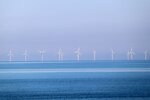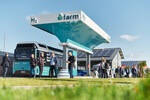07/13/2009
USA - US Wind Energy Technology - On the Cutting Edge of Science I
The American Wind Energy Association (AWEA) released their 20% Wind Report Card on July 8, following up on a study in which the Department of Energy proposed a goal where 20 percent of U.S. electricity comes from wind energy by 2030. The AWEA gave the overall U.S. push for wind power a “solid B”—high marks from an advocacy group that grades U.S. infrastructure.
The highest letter in the report was an A- awarded for “Technology Development.” This is no big surprise—for years now, the government, alternative-energy researchers and entrepreneurs have been putting time and money into making better tech for cleaner, more efficient energy production.
In the next two weeks 10 wind turbine technology designs that push the limits of the current design will be introduced.
1. WHALEPOWER
What It Is:
The company, WhalePower, has redesigned the typically smooth blades on a turbine, adding a series of ridges, based on tubercles, the bumps on humpback whale fins. The company says this new blade design could increase annual electrical production for existing wind farms by 20 percent.
How It Works:
Humpback whales tilt their fins at steep angles to achieve better lift in the water. Too much tilt, however, has the opposite effect—a loss of lift, called stalling. Tubercles prevent stalling, allowing for more aggressive fin tilts. WhalePower's tubercle-like structures on the turbine blades allow the blades to have steeper angles—without causing stalling or creating too much drag. During low wind, blades with steeper angles can theoretically generate significantly more power. Wind tunnel tests published by Frank Fish, president and founder of WhalePower, and by Duke University fluid dynamics expert Laurens Howle in 2004 showed that, in some cases, adding tubercle-like bumps to model fins pushed back the stall angle by as much as 40 percent.
Where To Find It:
Testing on the tubercle-enhanced blades began in 2007 at The Wind Energy Institute of Canada in Prince Edward Island. A Canadian ventilation company, Envira-North Systems, will be the first to use tubercle technology in industrial fans.
Please refer to www.youtube.com and type in "Whalepower" to view video material that provides more indepth information. Please also contact Trevor Sievert at ts@windfair.net for more information
The highest letter in the report was an A- awarded for “Technology Development.” This is no big surprise—for years now, the government, alternative-energy researchers and entrepreneurs have been putting time and money into making better tech for cleaner, more efficient energy production.
In the next two weeks 10 wind turbine technology designs that push the limits of the current design will be introduced.
1. WHALEPOWER
What It Is:
The company, WhalePower, has redesigned the typically smooth blades on a turbine, adding a series of ridges, based on tubercles, the bumps on humpback whale fins. The company says this new blade design could increase annual electrical production for existing wind farms by 20 percent.
How It Works:
Humpback whales tilt their fins at steep angles to achieve better lift in the water. Too much tilt, however, has the opposite effect—a loss of lift, called stalling. Tubercles prevent stalling, allowing for more aggressive fin tilts. WhalePower's tubercle-like structures on the turbine blades allow the blades to have steeper angles—without causing stalling or creating too much drag. During low wind, blades with steeper angles can theoretically generate significantly more power. Wind tunnel tests published by Frank Fish, president and founder of WhalePower, and by Duke University fluid dynamics expert Laurens Howle in 2004 showed that, in some cases, adding tubercle-like bumps to model fins pushed back the stall angle by as much as 40 percent.
Where To Find It:
Testing on the tubercle-enhanced blades began in 2007 at The Wind Energy Institute of Canada in Prince Edward Island. A Canadian ventilation company, Envira-North Systems, will be the first to use tubercle technology in industrial fans.
Please refer to www.youtube.com and type in "Whalepower" to view video material that provides more indepth information. Please also contact Trevor Sievert at ts@windfair.net for more information
- Source:
- Online editorial www.windfair.net
- Author:
- Posted by: Trevor Sievert Online Editorial Journalist
- Email:
- ts@windfair.net
- Link:
- www.windfair.net/...
- Keywords:
- wind energy, renewable energy, jobs, wind turbine, wind power, wind farm, rotorblade, onshore, offshore


























